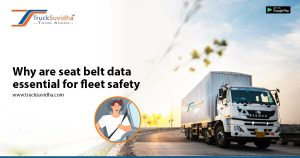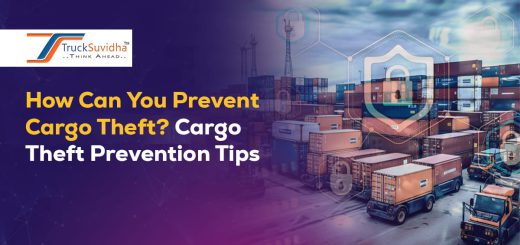Why are seat belt data essential for fleet safety?
Despite new safety technologies, seat belts remain the most effective injury prevention tool in your car. Thankfully, more people are preparing each year. With to developments in vehicle technology, driving has never been safer or more fun. Accidents are being avoided and lives are being saved through lane departure warning systems, backup cameras, and tyre pressure monitoring systems. Nonetheless, the greatest way to prevent injury in the event of a collision is to always buckle up.
You still run the danger of getting into an accident while driving even if your car has the highest safety ratings. One of the best methods to lower the risk of accidents, injuries, and fatalities when driving is to always wear a seat belt. Not only will wearing a seatbelt keep you safe, but it will also keep you at ease.
Several car models, manufacturers, and years may provide seat belt data in different ways. Finding a mechanism to precisely measure seat belt usage across your fleet is essential, for this reason. By helping your fleet’s drivers adhere to your driver safety programmes, recording seat belt data protects both the driver and your business.
Why is seat belt information necessary for fleet reports?
The main reason why seat belt usage data needs to get tracked and included in fleet reports is that it will promote accountability. Following are some ways in which this directly impacts fleet safety:

Create a driver safety programme.
Despite the audible and visual cues to buckle up, some people choose not to do so because no one notices or calls attention to their lack of seat belt use. Using seat belt data improves visibility while also encouraging drivers to adopt safe driving practises as they are aware of getting watched.
Boost Driver Safety
Automating the performance and analysis of safety training materials and procedures using seat belt data is the first thing your business can do.
Minimise company liability
You have all the information you need to replicate any occurrence and have a better understanding of what actually happened thanks to safety protocols set up and maintained by seat belt data. Then, your company can take all reasonable steps to reduce any risks, and the data can give documentation, leading to either no or little liability.
Automate Safety Initiatives
The software you employ can help you build up fully automated safety processes that will enable you to improve safety by doing away with the need for the driver’s seatbelt. There are some helpful adjustments, including:
- The technology will send the motorist an SMS or email to let him know if he is not wearing a seatbelt.
- In addition to the other variables it tracks, our system’s driver scorecard also evaluates drivers according on how often they fail to wear their seatbelts.
What are some ways that fleet managers can promote effective seat belt use?
As you might guess, one of your duties as a fleet owner or manager is to make sure that your drivers are knowledgeable with all safety measures. This is also one of your normal business practises. You can take a number of steps to increase fleet safety in addition to building and maintaining adherence to seat belt safety regulations.
Hiring competent drivers and instructing them on how to manage car crashes and drive safely to prevent them are a couple of examples of such actions. You may also monitor the whereabouts of your drivers. To do this, one must keep track of all the important behavioural details.
In general, you should make sure that everyone who uses your fleet prioritises safety above everything else. That covers everything from using your seatbelt to driving safely and following the rest of the organization’s safety guidelines.
What are the difficulties encountered when gathering seatbelt data?
With only two states—buckled or unbuckled—reporting seat belt data might seem straightforward, but it is not. Among the many difficulties are:
Information about seatbelts is specific to the OEM.
This means that distinct On-board Diagnostics Parameter IDs (OBD-II PIDs), the code used to request engine data, are mainly used by various models and manufacturers to report data in various locations. As a result, if a car transmits seat belt information, another vehicle may indicate that a door is open.
Not all seat belt data can be automatically delivered
Seat belt information is occasionally broadcast freely and is occasionally required by the engine computer. Additionally, when the status changes, data is occasionally only reported once.
Seatbelt data can be “bouncy.”
After starting the ignition, it frequently hops around for a few seconds before settling on the right value. In the first few seconds after the car started, there should not have been more than 20 instances of buckling and unbuckling. Telematics devices will therefore need to determine the precise seat belt data after the dust has settled.
A driver’s travel area’s most dangerous road portions can get found with the right study. Once they’ve got identified, you can make plans and adjust your routes to get around them.
Visit us- www.trucksuvidha.com.




Recent Comments